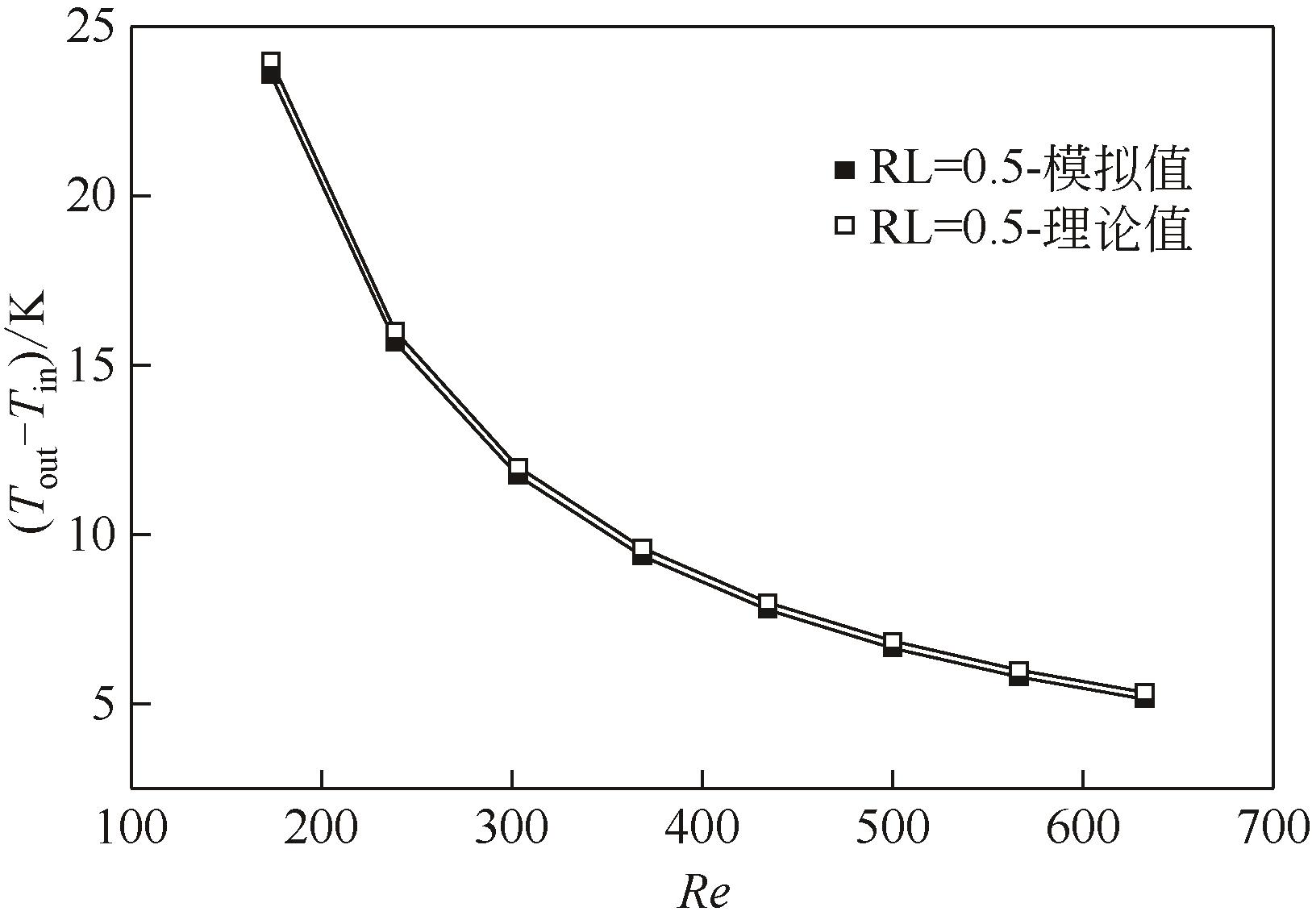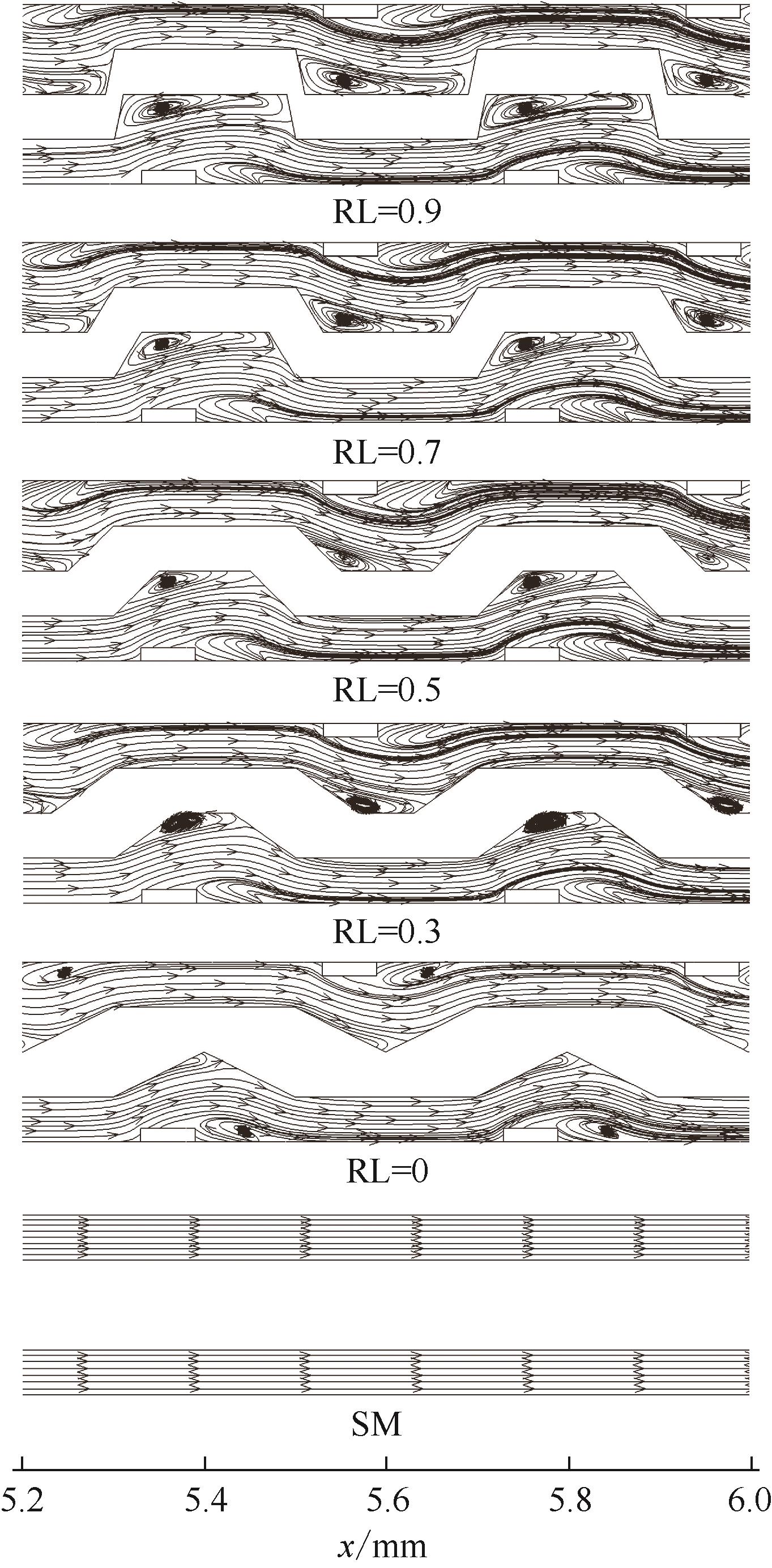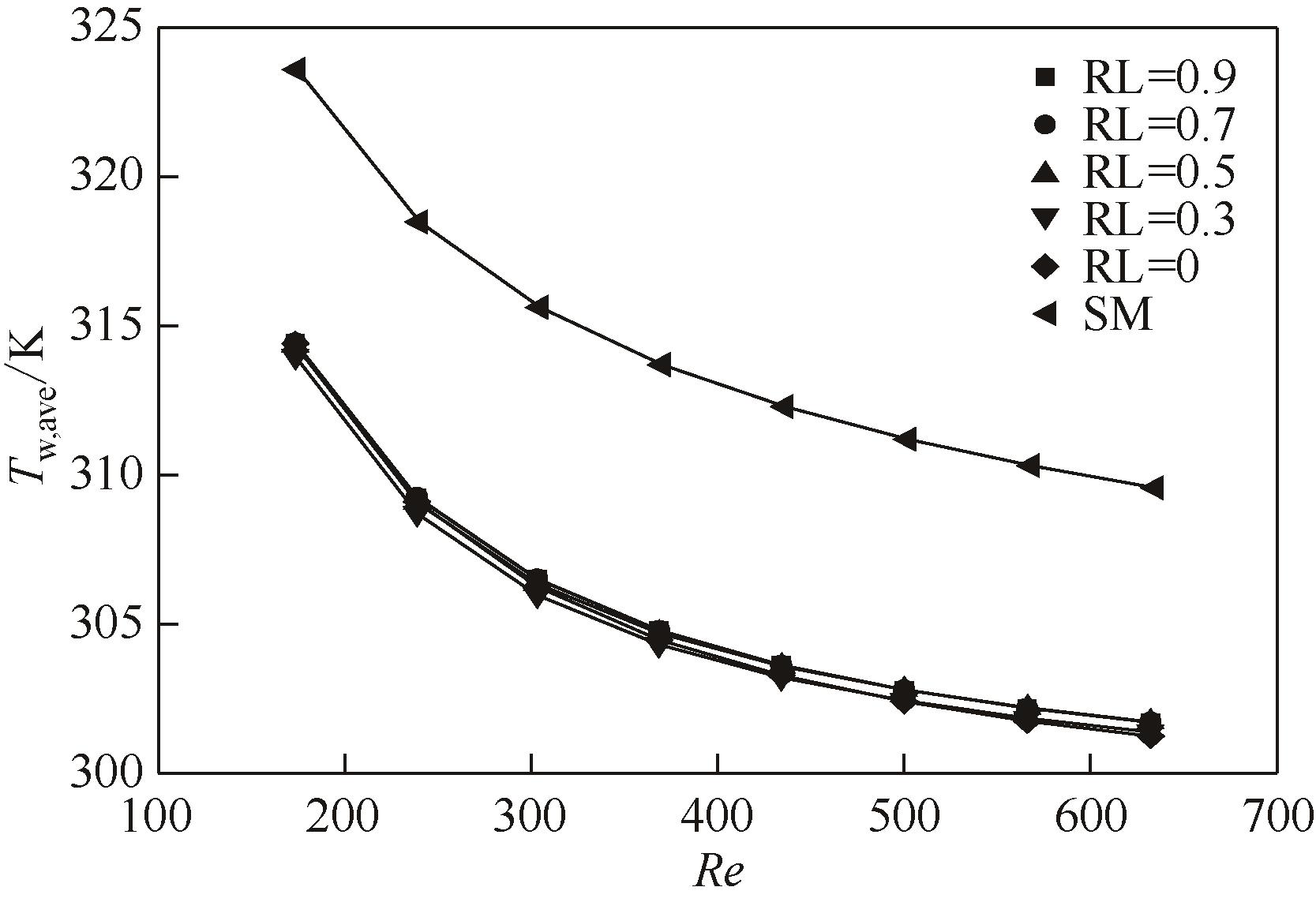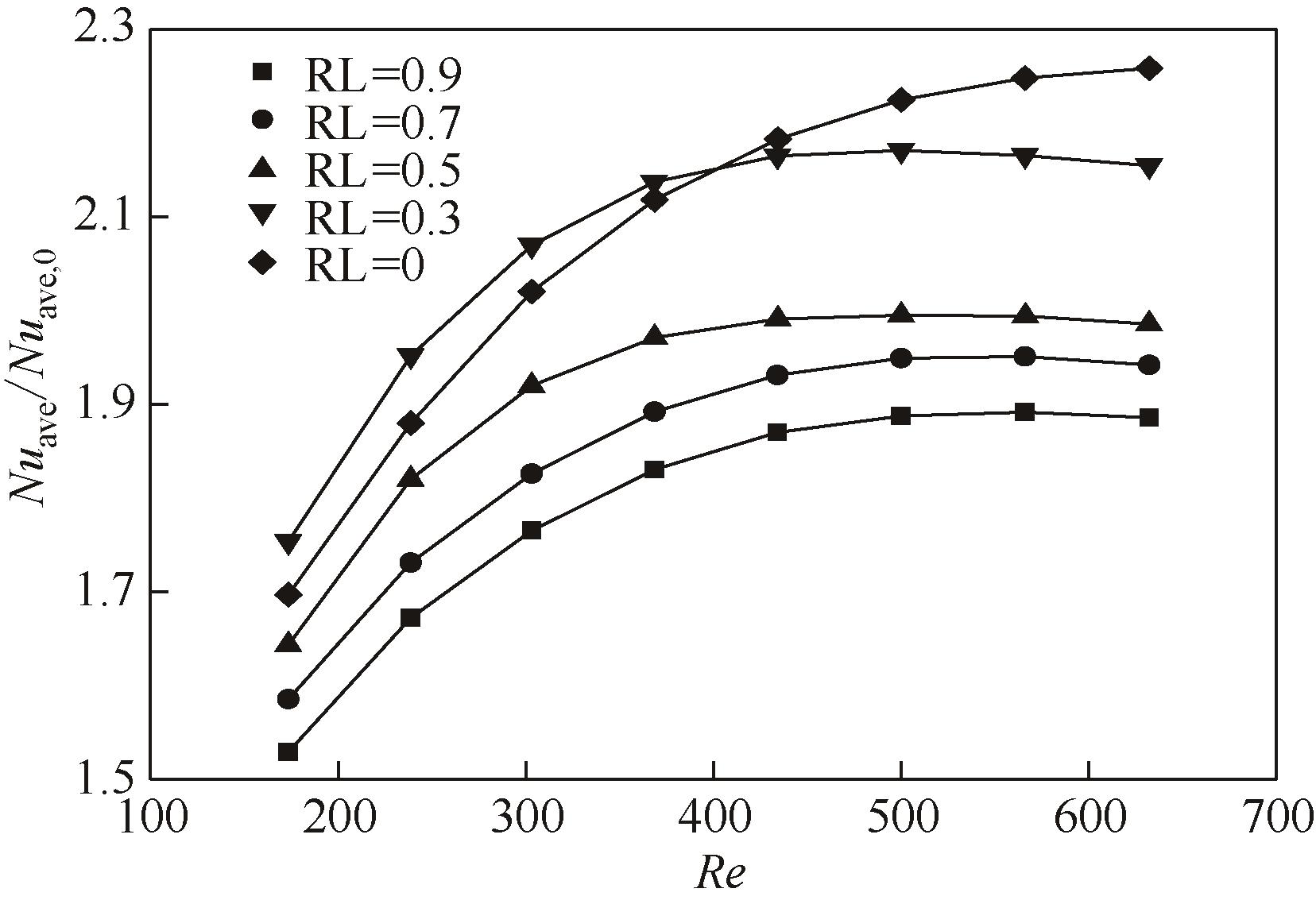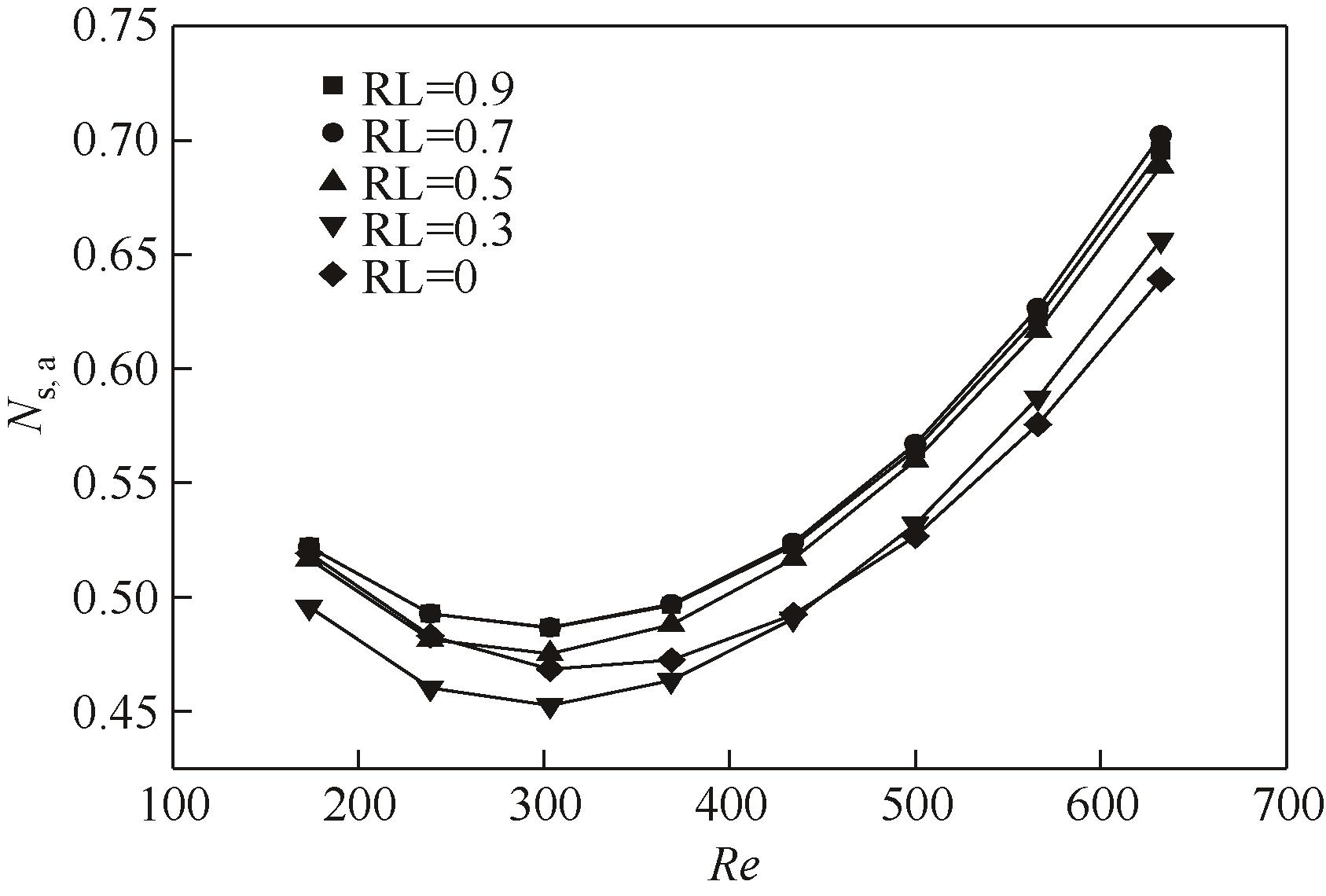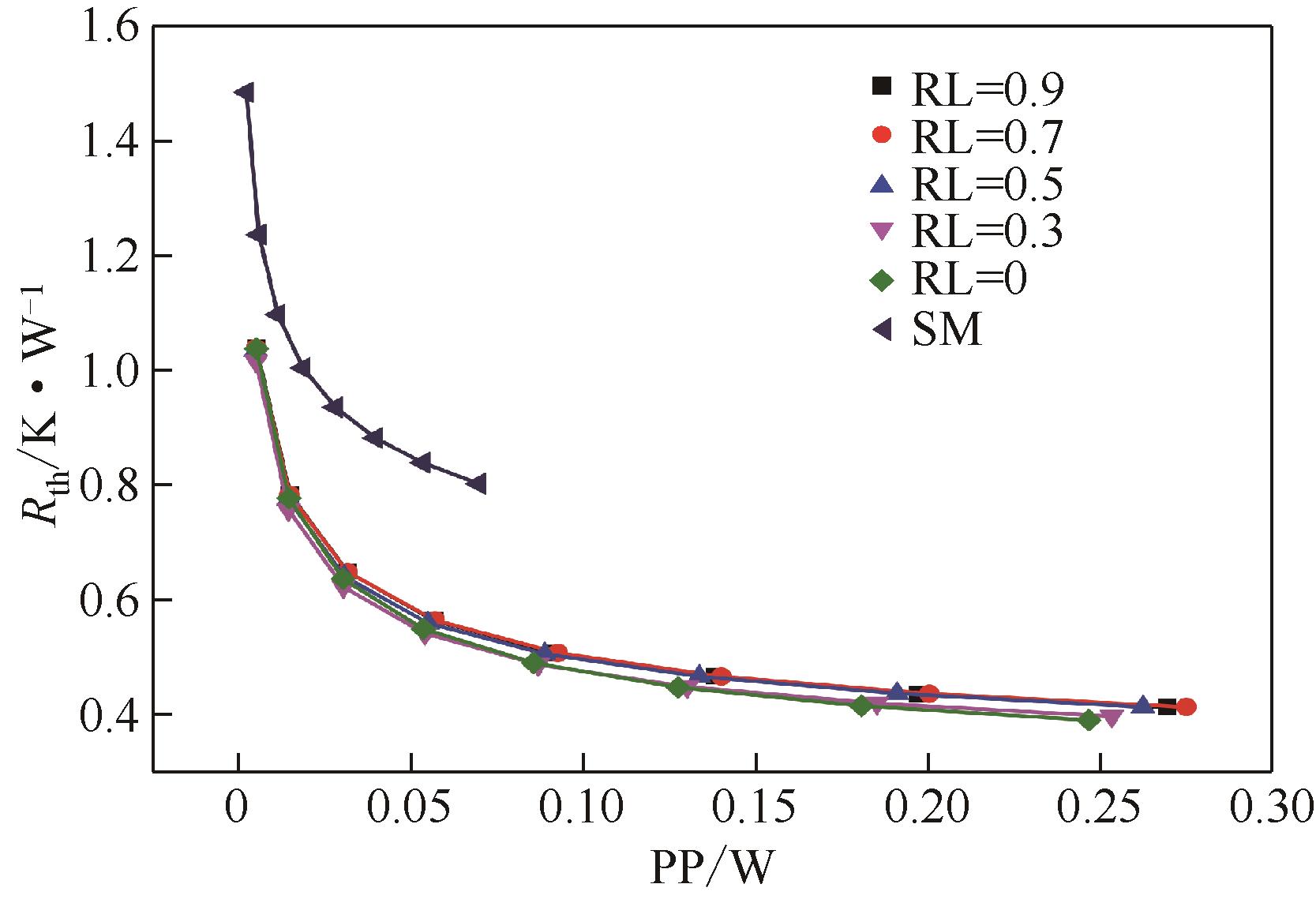Chemical Industry and Engineering Progress ›› 2022, Vol. 41 ›› Issue (6): 2893-2901.DOI: 10.16085/j.issn.1000-6613.2021-1351
• Chemical processes and equipment • Previous Articles Next Articles
Flow and heat transfer characteristics in microchannels with periodic fluid disturbance structures
- 1.School of Energy and Safety Engineering, Tianjin Chengjian University, Tianjin 300384, China
2.Tianjin Lantian Solar Technology Company Limited, Tianjin 300384, China
-
Received:2021-06-28Revised:2021-07-09Online:2022-06-21Published:2022-06-10 -
Contact:LI Yifan
带有周期性扰流结构的微通道内流动与传热特性
- 1.天津城建大学能源与安全工程学院,天津 300384
2.天津蓝天太阳科技有限公司,天津 300384
-
通讯作者:李艺凡 -
作者简介:李艺凡(1988—),女,博士,讲师,研究方向为微尺度流动与传热。E-mail:yifan100zixuan@163.com 。 -
基金资助:天津市“131”创新型人才培养工程第三层次;天津市高校“青年后备人才支持计划”;天津城建大学博士科研启动基金(TJCJBSQD-017)
CLC Number:
Cite this article
LI Yifan, WANG Zhipeng. Flow and heat transfer characteristics in microchannels with periodic fluid disturbance structures[J]. Chemical Industry and Engineering Progress, 2022, 41(6): 2893-2901.
李艺凡, 王志鹏. 带有周期性扰流结构的微通道内流动与传热特性[J]. 化工进展, 2022, 41(6): 2893-2901.
share this article
Add to citation manager EndNote|Ris|BibTeX
URL: https://hgjz.cip.com.cn/EN/10.16085/j.issn.1000-6613.2021-1351
| Lb | Lc | Lr | Ls | Lw | W | Wc | Wch | Wr |
|---|---|---|---|---|---|---|---|---|
| 0~180 | 200 | 60 | 200 | 10~100 | 100 | 200 | 100 | 30 |
| Lb | Lc | Lr | Ls | Lw | W | Wc | Wch | Wr |
|---|---|---|---|---|---|---|---|---|
| 0~180 | 200 | 60 | 200 | 10~100 | 100 | 200 | 100 | 30 |
| T/K | μf×106/Pa·s |
|---|---|
| 293 | 1004 |
| 303 | 801.5 |
| 313 | 653.3 |
| 323 | 549.4 |
| 333 | 469.9 |
| 343 | 406.1 |
| 353 | 355.1 |
| 363 | 314.9 |
| T/K | μf×106/Pa·s |
|---|---|
| 293 | 1004 |
| 303 | 801.5 |
| 313 | 653.3 |
| 323 | 549.4 |
| 333 | 469.9 |
| 343 | 406.1 |
| 353 | 355.1 |
| 363 | 314.9 |
| 边界条件 | 表达式 |
|---|---|
| 速度入口,且温度恒定 | x=0,uin=1~4.5m·s-1,Tin=293K |
| 压力出口,出口处流体相对压力为0 | x=10000μm,pout=0 |
| 热沉底面施加恒定热流 | z=0,q=106W·m-2 |
| 加热面之外的其他表面绝热 | |
| 计算区域两侧为“对称”条件 | y=0和y=200μm, |
| 流固接触面为“耦合且无滑移” | U =0;Ts=Tf; |
| 边界条件 | 表达式 |
|---|---|
| 速度入口,且温度恒定 | x=0,uin=1~4.5m·s-1,Tin=293K |
| 压力出口,出口处流体相对压力为0 | x=10000μm,pout=0 |
| 热沉底面施加恒定热流 | z=0,q=106W·m-2 |
| 加热面之外的其他表面绝热 | |
| 计算区域两侧为“对称”条件 | y=0和y=200μm, |
| 流固接触面为“耦合且无滑移” | U =0;Ts=Tf; |
| 1 | IM S, BANERJEE K. Full chip thermal analysis of planar (2-D) and vertically integrated (3-D) high performance ICs[C]// Electron Devices Meeting, 2000. |
| 2 | CONG J, WEI J, ZHANG Y. A thermal-driven floorplanning algorithm for 3D ICs[C]// International Conference on Computer Aided Design, 2004. |
| 3 | SOHEL MURSHED S M, NIETO DE CASTRO C A. A critical review of traditional and emerging techniques and fluids for electronics cooling[J]. Renewable and Sustainable Energy Reviews, 2017, 78: 821-833. |
| 4 | TUCKERMAN D B, PEASE R F W. High-performance heat sinking for VLSI[J]. IEEE Electron Device Letters, 1981, 2(5): 126-129. |
| 5 | ZHAI Y L, XIA G D, LI Z H. A novel flow arrangement of staggered flow in double-layered microchannel heat sinks for microelectronic cooling[J]. International Communications in Heat and Mass Transfer, 2016, 79: 98-104. |
| 6 | MA D D, XIA G D, WANG J, et al. An experimental study on hydrothermal performance of microchannel heat sinks with 4-ports and offset zigzag channels[J]. Energy Conversion and Management, 2017, 152: 157-165. |
| 7 | HUANG P N, DONG G P, ZHONG X N, et al. Numerical investigation of the fluid flow and heat transfer characteristics of tree-shaped microchannel heat sink with variable cross-section[J]. Chemical Engineering & Processing: Process Intensification, 2020, 147: 107769. |
| 8 | 王晗, 袁礼, 王超, 等. 周期性分流微通道的结构设计及散热性能[J]. 物理学报, 2021, 70(10): 200-211. |
| WANG Han, YUAN Li, WANG Chao, et al. Structure and thermal properties of periodic split-flow microchannels[J]. Acta Physica Sinica, 2021, 70(10): 200-211. | |
| 9 | 陈然, 唐晟. 基于金字塔形扰动结构的双层梯形微通道热沉传热性能模拟[J]. 化工进展, 2020, 39(S2): 19-25. |
| CHEN Ran, TANG Sheng. Heat transfer performance simulation of double-layer trapezoidal microchannel heat sink based on pyramidal turbulence structure[J]. Chemical Industry and Engineering Progress, 2020, 39(S2): 19-25. | |
| 10 | 陈卓, 潘振海, 吴慧英. 自由摆动方柱强化微流体通道内传热传质[J]. 化工进展, 2019, 38(9): 3979-3987. |
| CHEN Zhuo, PAN Zhenhai, WU Huiying. Heat and mass transfer enhancement in a microchannel with freely rotating cylinder[J]. Chemical Industry and Engineering Progress, 2019, 38(9): 3979-3987. | |
| 11 | BHANDARI P, PRAJAPATI Y K. Thermal performance of open microchannel heat sink with variable pin fin height[J]. International Journal of Thermal Sciences, 2021, 159: 106609. |
| 12 | KUMAR K, KUMAR P. Effect of groove depth on hydrothermal characteristics of the rectangular microchannel heat sink[J]. International Journal of Thermal Sciences, 2021, 161: 106730. |
| 13 | BEJAN A. Entropy generation minimization[M]. New York: CRC Press, 1996. |
| 14 | JAPAR W M A A, SIDIK N A C, MAT S. A comprehensive study on heat transfer enhancement in microchannel heat sink with secondary channel[J]. International Communications in Heat and Mass Transfer, 2018, 99: 62-81. |
| 15 | DATTA A, SHARMA V, SANYAL D, et al. A conjugate heat transfer analysis of performance for rectangular microchannel with trapezoidal cavities and ribs[J]. International Journal of Thermal Sciences, 2019, 138: 425-446. |
| 16 | 贾玉婷, 夏国栋, 马丹丹, 等. 水滴型凹穴微通道流动与传热的熵产分析[J]. 机械工程学报, 2017, 53(4): 141-148. |
| JIA Yuting, XIA Guodong, MA Dandan, et al. Entropy generation analysis of flow and heat transfer in microchannel with droplet reentrant cavities[J]. Journal of Mechanical Engineering, 2017, 53(4): 141-148. | |
| 17 | LI M, LAI A C K. Thermodynamic optimization of ground heat exchangers with single U-tube by entropy generation minimization method[J]. Energy Conversion and Management, 2013, 65: 133-139. |
| 18 | ALI A Y M, ABO-ZAHHAD E M, ELQADY H I, et al. Thermal analysis of high concentrator photovoltaic module using convergent-divergent microchannel heat sink design[J]. Applied Thermal Engineering, 2021, 183: 116201. |
| 19 | 邱云龙, 胡文杰,吴昌聚, 等. 嵌入式微通道传热特性及局部热点尺度效应[J]. 浙江大学学报(工学版), 2021, 55(4): 1-10. |
| QIU Yunlong, HU Wenjie, WU Changju, et al. Heat transfer performance and scale effect of hot spots in embedded microchannel cooling system[J]. Journal of Zhejiang University (Engineering Science), 2021, 55(4): 1-10. | |
| 20 | WEBB R L. Performance evaluation criteria for use of enhanced heat transfer surfaces in heat exchanger design[J]. International Journal of Heat and Mass Transfer, 1981, 24: 715-726. |
| 21 | SRIVASTAVA P, PATEL R I, DEWAN A. A study on thermal characteristics of double-layered microchannel heat sink: effects of bifurcation and flow configuration[J]. International Journal of Thermal Sciences, 2021, 162: 106791. |
| 22 | ZHU Q F, XIA H X, CHEN J J. Fluid flow and heat transfer characteristics of microchannel heat sinks with different groove shapes[J]. International Journal of Thermal Sciences, 2021, 161: 106721. |
| 23 | DEY P, SAHA S K. Fluid flow and heat transfer in microchannel with porous bio-inspired roughness[J]. International Journal of Thermal Sciences, 2021, 161: 106729. |
| 24 | LI Y F, XIA G D, MA D D, et al. Characteristics of laminar flow and heat transfer in microchannel heat sink with triangular cavities and rectangular ribs[J]. International Journal of Heat and Mass Transfer, 2016, 98: 17-28. |
| 25 | LI Y F, XIA G D, JIA Y T, et al. Effect of geometric configuration on the laminar flow and heat transfer in microchannel heat sinks with cavities and fins[J]. Numerical Heat Transfer, Part A: Applications, 2017, 71(5): 528-546. |
| 26 | 李艺凡, 夏国栋, 马丹丹, 等. 复杂微通道内对流传热的场协同及熵产[J]. 航空动力学报, 2019, 34(7): 1471-1482. |
| LI Yifan, XIA Guodong, MA Dandan, et al. Field synergy and entropy generation of convective heat transfer in microchannels with complex structure[J]. Journal of Aerospace Power, 2019, 34(7): 1471-1482. | |
| 27 | LI Y F, WANG Z P, YANG J L, et al. Thermal and hydraulic characteristics of microchannel heat sinks with cavities and fins based on field synergy and thermodynamic analysis[J]. Applied Thermal Engineering, 2020, 175: 115348. |
| 28 | STEINKE M E, KANDLIKAR S G. Single-phase liquid friction factors in microchannels[J]. International Journal of Thermal Sciences, 2006, 45: 1073-1083. |
| 29 | CHAI L, XIA G D, WANG H S. Parametric study on thermal and hydraulic characteristics of laminar flow in microchannel heat sink with fan-shaped ribs on sidewalls (Ⅲ): performance evaluation[J]. International Journal of Heat and Mass Transfer, 2016, 97: 1091-1101. |
| [1] | LIU Shijie, MO Xun, TU Aimin, ZHU Dongsheng, TAN Lianyuan. Shell-side heat transfer enhancement of a novel longitudinal flow oil cooler [J]. Chemical Industry and Engineering Progress, 2022, 41(7): 3475-3482. |
| [2] | LI Yongtong, LIU Jian, YANG Laishun. Thermo-hydraulic performance analysis of novel metal foam and pin fin hybrid heat sink [J]. Chemical Industry and Engineering Progress, 2022, 41(5): 2268-2276. |
| [3] | YANG Honghai, ZHANG Miao, LIU Liwei, ZHOU Yi, SHEN Junjie, SHI Weigang, YIN Yong. Heat transfer performance enhancement and prediction in GO/water pulsating heat pipe [J]. Chemical Industry and Engineering Progress, 2022, 41(4): 1725-1734. |
| [4] | LIN Qingyu, WANG Zhu, FENG Zhenfei, LING Biao, CHEN Zhen. Review progress on twisted tape structure for heat transfer and entropy generation in tube [J]. Chemical Industry and Engineering Progress, 2022, 41(11): 5709-5721. |
| [5] | LIN Weixiang, SU Gangchuan, CHEN Qiang, WEN Jian, AKRAPHON Janon, WANG Simin. Influencing factors of ultrasound enhanced heat transfer of immersed coil heat exchanger [J]. Chemical Industry and Engineering Progress, 2022, 41(1): 40-51. |
| [6] | YU Yanfang, CHEN Yaxin, MENG Huibo, WANG Zongyong, WU Jianhua. Analysis of turbulent heat transfer characteristics of nanofluids in the Lightnin static mixer [J]. Chemical Industry and Engineering Progress, 2021, 40(S2): 30-39. |
| [7] | LIN Wenzhu, LING Ziye, FANG Xiaoming, ZHANG Zhengguo. Research progress on heat transfer of phase change material heat storage technology [J]. Chemical Industry and Engineering Progress, 2021, 40(9): 5166-5179. |
| [8] | Zhanpeng SUN, Longlong LIANG, Chunyu LIU, Xinqi YU, Guang YANG. Analysis of entropy generation and classification performance of turbo air classifier [J]. Chemical Industry and Engineering Progress, 2020, 39(10): 3909-3915. |
| [9] | Xin GU, Zhiyang ZHENG, Yuankun LUO, Xiaochao XIONG, Dabo ZHANG. Optimization on shell side structure of twisty flow heat exchanger based on orthogonal experiment [J]. Chemical Industry and Engineering Progress, 2019, 38(04): 1688-1695. |
| [10] | Lili SUN. Innovating heat transfer enhancement application to improve the competitiveness of refinery and petrochemical enterprises [J]. Chemical Industry and Engineering Progress, 2019, 38(02): 711-719. |
| [11] | LIN Wenzhu, CAO Jiahao, FANG Xiaoming, ZHANG Zhengguo. Research progress of heat transfer enhancement of shell-and-tube heat exchanger [J]. Chemical Industry and Engineering Progress, 2018, 37(04): 1276-1286. |
| [12] | XIAO Wu, SHI Zhaoxia, JIANG Xiaobin, LI Xiangcun, WU Xuemei, HE Gaohong, LUO Li. Research progress on heat exchanger network considering heat transfer enhancement of shell-and-tube exchangers [J]. Chemical Industry and Engineering Progress, 2018, 37(04): 1267-1275. |
| [13] | CHEN Liang, LIU Daoping, YANG Liang. Progress of heat transfer enhancement technology in phase change energy storage process [J]. Chemical Industry and Engineering Progress, 2017, 36(S1): 291-296. |
| [14] | ZHAN Hongren, HUI Yao, WU Zhong. Research progress on heat transfer enhancement in closed thermosyphon [J]. Chemical Industry and Engineering Progress, 2017, 36(08): 2764-2775. |
| [15] | CHEN Hongxia, HUANG Linbin, GONG Yifei. Progress on boiling heat transfer from porous structure and surface wettability [J]. Chemical Industry and Engineering Progress, 2017, 36(08): 2798-2808. |
| Viewed | ||||||
|
Full text |
|
|||||
|
Abstract |
|
|||||



